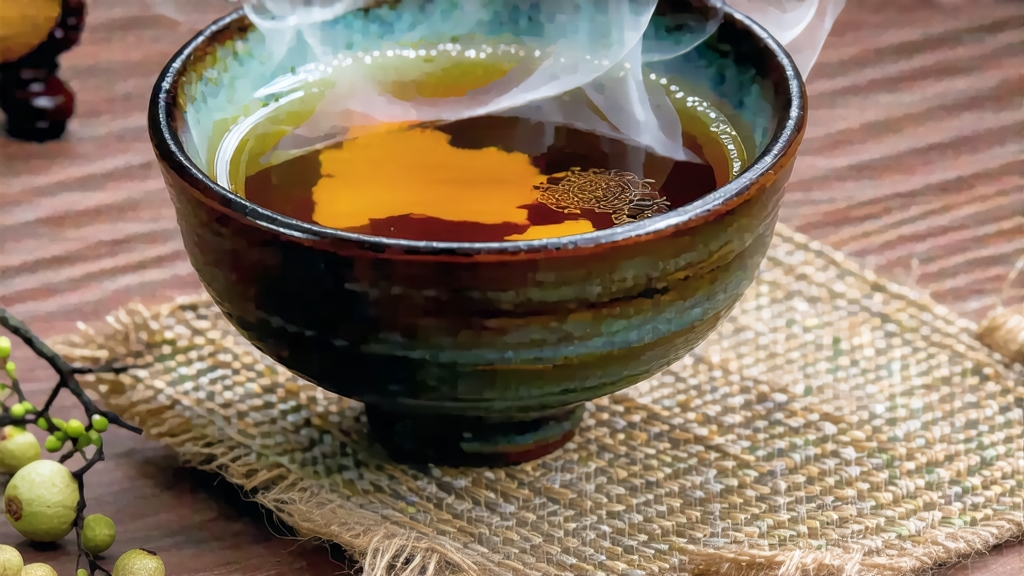
Tucked into the cloud-veined folds of north-western Hunan, the small county of Anhua has been whispering to tea leaves for more than a thousand years. To the outside world “dark tea” (heicha) is often lumped under the catch-all label “post-fermented,” yet within that shadowed category Anhua Dark Tea stands apart, a living archive of microbes, mountain air, and human patience. Its story begins during the Tang dynasty, when mule caravans carried compressed bricks of rough leaf along the Ancient Tea-Horse Road, trading caffeine for Tibetan horses at 3,000 m. The tea survived the month-long trek because something invisible was happening inside the bamboo husks and oiled paper: a slow, microbial conversation that tamed bitterness, birthed sweetness, and turned green into dusk.
By the Ming era the imperial court had granted Anhua county exclusive rights to supply “border tea” to the north-western frontiers; the leaf had become strategic, a currency of loyalty. Caravanserais sprouted every twenty li, their courtyards stacked high with dark bricks stamped with the government seal. When the Qing opened the Yangtze river ports, Anhua tea sailed down to Hankou, then to London and Saint Petersburg, where Russian merchants christened it “Chinese brick tea” and measured it against the rouble. Thus a frontier ration became a global commodity, yet the mountains kept their secrets: the exact strain of Eurotium cristatum that blooms into golden “flowers,” the precise ratio of pine smoke to humidity, the moment when a tea master decides the leaf has “turned the corner” from raw to ripe.
Anhua is not a single tea but a family of shapes and ages. The most iconic is the Fu brick (Fuzhuan), a 2 kg rectangular block distinguished by the yellow-gold speckles that freckle its broken leaves. Those speckles are colonies of Eurotium cristatum, a beneficial mold that digests cellulose and releases a mellow, dried-apricot sweetness. Next comes the Hua brick (Huazhuan), denser and darker, pressed with long leaves and aged for decades until it smells of camphor and wet slate. Smaller Qianliang columns—100 liang (3.75 kg) of leaf wrapped in bamboo and palm—are still hewn by hand with wooden mallets, their surfaces scarred by the twine that once squeezed them tight on horseback. Finally there are the loose-leaf grades, sun-withered and pine-smoked, meant for everyday drinking in Hunan teahouses where the kettle never cools.
Craft begins on the misty terraces of Yuntaishan, where the local cultivar—Yun-da cultivar group—grows at 600–800 m among bamboo and wild tangerine. Picking follows the lunar calendar: one bud and three leaves after Qingming, when spring thunder has coaxed the sap upward. The leaves are briefly wilted on bamboo mats, then “killed-green” in a wok heated to 280 °C for exactly 90 seconds; the goal is to rupture cell walls without baking the enzymes that will drive post-fermentation. While still warm, the leaf is piled 70 cm deep inside darkened rooms where humidity hovers at 85 %. Over sixteen hours the pile is turned every thirty minutes, oxygen coaxing thermophilic bacteria to raise the core temperature to 55 °C. When the leaf has turned ochre and exudes the scent of wet walnuts, it is spread under the sun for a final drying, fingers of pine smoke drifting from the corner hearth where the master burns resin-rich Masson pine. This smoke is not accidental; the phenols adhere to leaf surfaces, acting as natural preservatives and lending a cool, resinous note that later mellows into sandalwood.
The semi-fermented maocha is now ready to become Fu brick. Leaves are steamed for eight seconds, just long enough to soften without collapsing, then tipped into a cedar-wood mold lined with cotton cloth. Two men press the tea with their body weight, rhythmically rocking until the density reaches 1.1 g/cm³—tight enough to survive years of caravan jostling yet porous enough for air to feed the golden flowers. After twenty-four hours the brick is eased out and wheeled into the “flowering room,” a